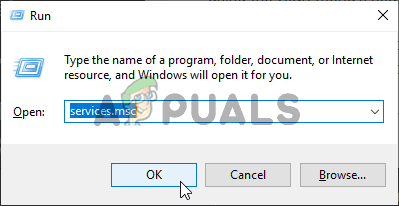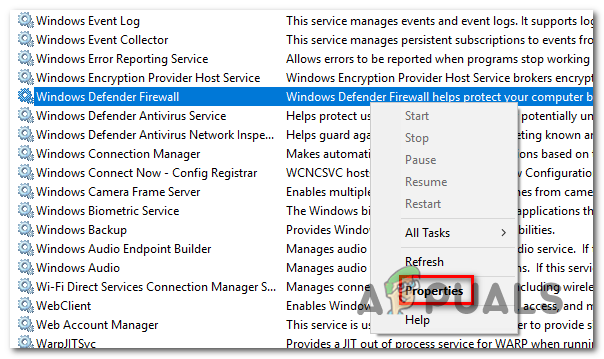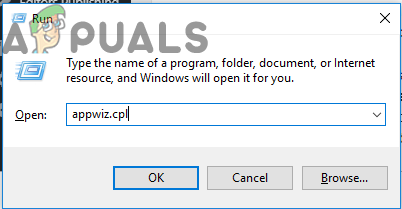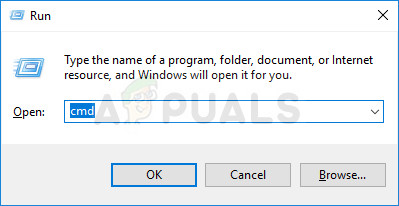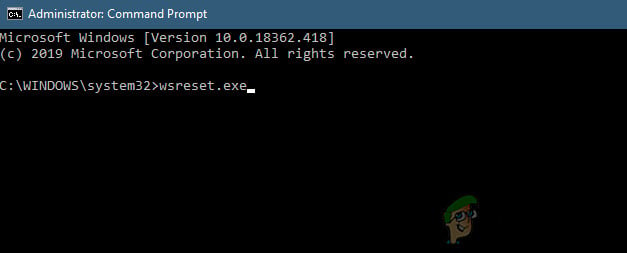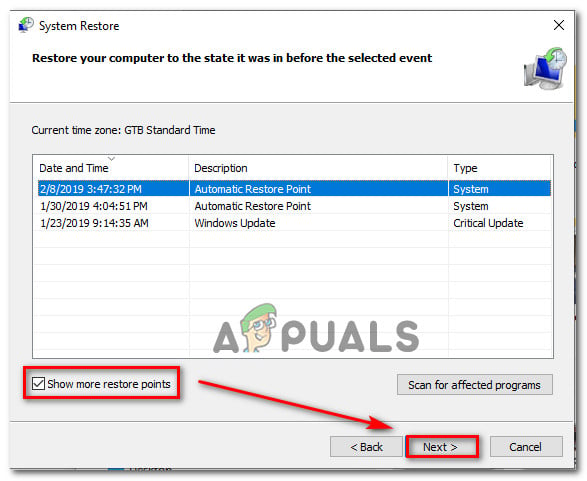What’s causing the Windows Store Error 0x80073d0a?
We investigated this particular issue by looking at various user reports. We then proceeded to test dozens of repair strategies that were recommended by other users that we’re able to resolve the issue to find out the best repair strategies. As it turns out, several different scenarios might end up causing the 0x80073d0a error. Here’s a shortlist of potential culprits that might be responsible for this problem:
Method 1: Enabling the Windows Firewall service (if applicable)
As it turns out, one of the most common causes that will trigger this error message is a problem with the built-in firewall. Keep in mind that before Windows Store can contact Microsoft’s server to begin the download of a UWP app, the built-in firewall needs to verify if the connection is secure. If Windows Update is disabled and there’s no 3rd party equivalent that will fill in the gap, the 0x80073d0a error when the user tries to download the UWP application. Note: If Windows Firewall is the default security app and you’re on the latest build, you will not be able to change the status of the service. In this case, move directly to Method 2 as this method will not apply to your scenario. Several affected users have managed to get the issue resolved by accessing the Services screen and changing the status of the Windows Firewall service to Automatic. After doing this and restarting their computer, most affected users have reported that the issue was resolved. Here’s a quick guide on how you can enable the Windows Firewall service to fix the 0x80073d0a Store error: If you’re still encountering the same 0x80073d0a error or this scenario wasn’t applicable, move down to the next method below.
Method 2: Uninstalling the 3rd party equivalent (if applicable)
As it’s been reported by several different affected users, if you’re using a 3rd party equivalent as the default firewall, the Windows store might not be allowed to establish communications between the UWP store and Microsoft’s servers. There are a handful of 3rd party suites that are commonly reported for causing this problem (Norton and Kaspersky are most commonly reported) If this scenario is applicable, you can resolve the issue either by adding the communications with MS servers to the exclusion list or by uninstalling the 3rd party firewall altogether. Since the steps of adding items to the exclusion will vary a lot different depending on which security suite you’re using, we are going to focus on a universal method that will work regardless of the culprit that you’re encountering. Here’s a step-by-step guide that will allow you to uninstall the 3rd party firewall program and ensure that you’re not leaving behind any leftover programs that might still cause the same issue: If you’re still encountering the same 0x80073d0a error, move down to the next method below.
Method 3: Resetting the cache of Windows Store
As it turns out, this issue can also be caused by some type of corruption that ends up affecting your PC’s ability to establish connections between your integrated UWP store and Microsoft servers. In most cases, this problem occurs due to some temporary files that are stored inside the cache folder. A problem of this kind typically occurs after the security scanner ends up quarantining some items or after an unexpected machine interruption. Botched updates are a rare but possible cause that might facilitate the apparition of the 0x80073d0a error. Several Windows users that were also struggling with this problem have reported that they managed to resolve the issue by resetting Windows Store and all associated components. Keep in mind that there are two ways of resetting the Windows Store cache on Windows 10. The first option is easier, but it revolves around running a series of commands from a CMD terminal. But if you’re not comfortable with running CMD commands, you can also go for the GUI-exclusive approach where you can perform the same operation exclusively from the Windows settings menus. Feel free to follow whichever method is closer to what you feel more comfortable with:
Resetting the Windows Store cache via CMD
Resetting the Windows Store cache via the Settings app
If you’re still encountering the 0x80073d0a error when trying to download a UWP application, move down to the next method below.
Method 4: Using System Restore
In case you only noticed this behavior occurring recently, the issue is likely occurring due to a system change that ended up interfering with the Windows Store component. Keep in mind that 3rd party services or processes can also interfere with communications between the Store app and the external Microsoft Server. If this scenario is applicable, you should be able to resolve the issue by using the System Restore utility to fix the problem by returning your computer to a healthy state when the same circumstances that weren’t applicable. Keep in mind that by default, System Restore is configured to regularly save snapshots at important system landmarks (3rd party installations, critical update installations, etc.). But before you fire up this utility, keep in mind that any change you made before this point will be lost once the procedure is complete. This includes any UWP app installations, drivers, games and everything else. If you understand the repercussions of this method and you’re ready to get started, follow the instructions below: If you’re still dealing with the same problem or this method wasn’t applicable, move down to the next potential fix below.
Method 5: Repair install or Clean Install
If you’ve come this far and no repair strategy has allowed you to resolve the issue, the problem is likely happening due to an underlying system corruption issue that you can’t fix conventionally. In this case, you can fix the problem by refreshing every Windows component and by fixing all booting-related data. When having to refresh every Windows component, you have two ways forward: You either do a complete OS refresh or you use the focused approach where you only touch OS components. The easier option is a clean install. It’s easy to do and you don’t need any prerequisites, but the major downside is that you will lose any personal data stored on your OS drive if you don’t back them out in advance. If you’re looking for the focused approach, you should go for a repair install (in-place repair). This is the more tedious approach since you will need a Windows installation media and you need some technical abilities. But the major advantage is that the procedure will only touch your OS files – ALl your media, apps, games and even some user preferences will not be lost.
Fix: Error 0x80073CF9 in Windows Store on Windows 10 MobileHow to Fix ‘Error: 0x803F8001’ in Windows Store on Windows 11How to Fix Windows Store Error 0x80073cf0 on Windows 8 and 10How to Fix ‘Error Checking for Updates’ Error on Google Play Store?

